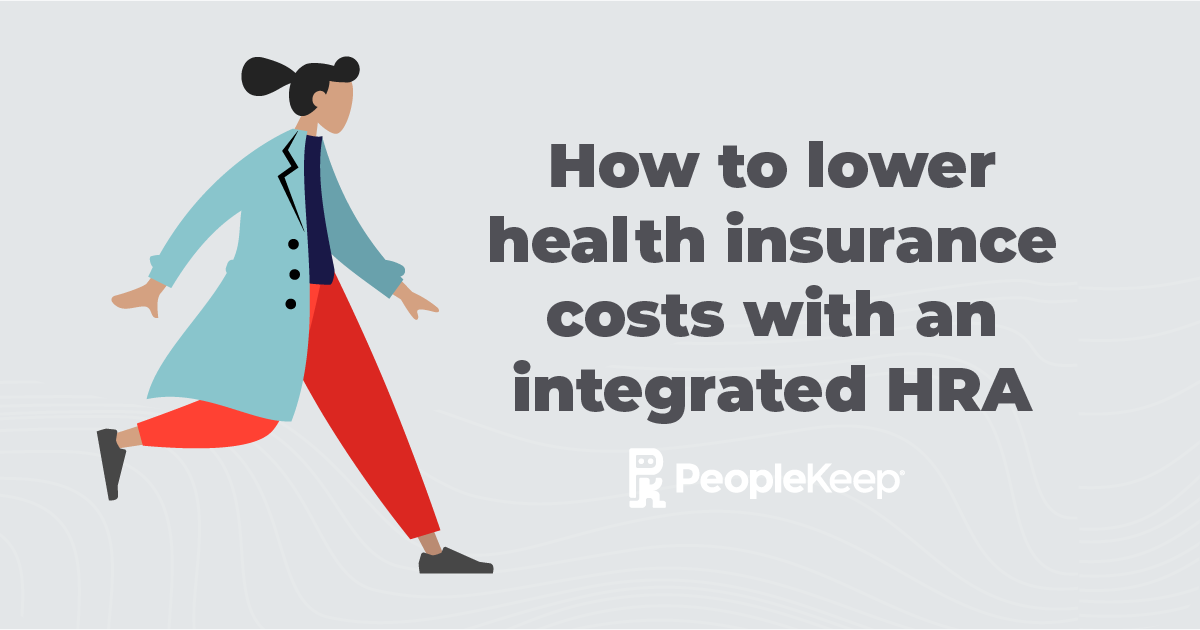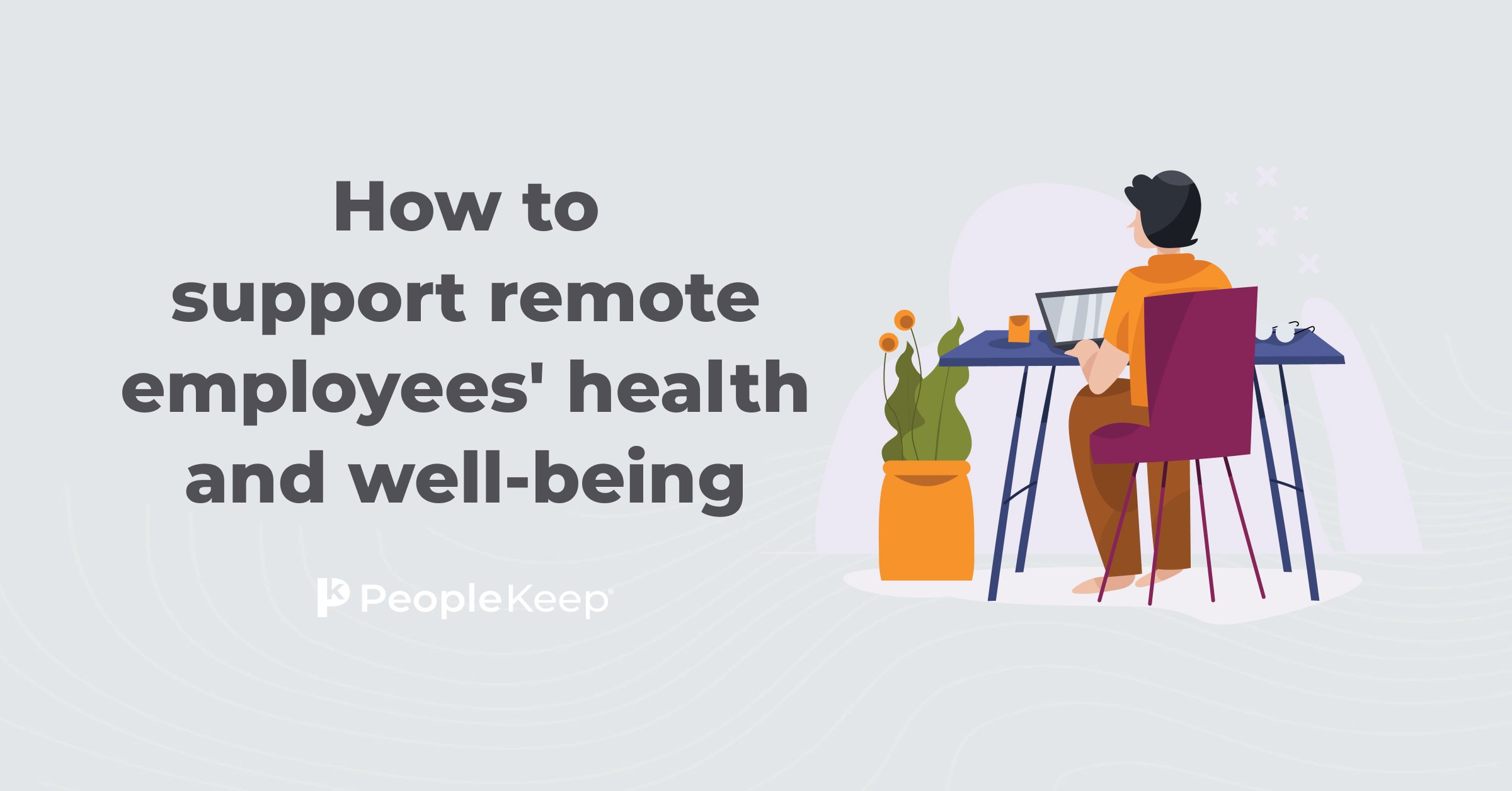How to keep your employees happy and healthy at work
By Holly Bengfort on November 30, 2023 at 12:15 PM
As an employer, you likely check in with your employees to ensure they're staying productive and meeting goals at work. But are you also keeping track of how happy and healthy they are?
The health of employees goes hand in hand with their job performance, making it an essential focus for organizations of all sizes. Many employers are implementing employee wellness programs and benefits to promote employee health and well-being.
In this article, we'll explore ways to keep your employees happy and healthy at work.
Why should you support your employees' well-being at work?
Employees spend as much as a quarter1 of their life at work. For many workers, this means sitting at desks and looking at computer monitors for long hours every day. Spending lengthy periods sitting can affect physical health.
According to the Mayo Clinic2, researchers have found that those who sit for more than eight hours each day without physical activity have a higher risk of early death. They also found that 60 to 75 minutes of moderately intense physical activity each day can counter these effects.
Supporting mental health in the workplace is also important. According to a study by the University of Massachusetts3, one-third of workers report high levels of work-related stress.
By supporting employee health and wellness, your employees will be less stressed and less likely to take a sick day.
Additionally, supporting your employees' health and well-being affects productivity, employee engagement, and job satisfaction, which can improve retention. According to MetLife's 2023 Employee Benefits Trends Study4, employees who feel cared for are 65% more likely to remain at their current organizations.
A 2022 Indeed survey5 also found that 80% of employees are more likely to stay with their current organization if happiness and well-being are measured, with 60% believing their well-being is integral to the organization's overall health.
Tips for staying healthy in the workplace
Happy employees are eager to show up and do good work. So, how can you keep your employees happy and healthy? We've compiled a list of tips and benefits ideas that can help improve your employees' physical and mental health.
You can improve your employees' health and well-being in the workplace by:
- Encouraging physical activity
- Incentivizing good nutrition
- Monitoring employee stress levels
- Providing ergonomic equipment
- Providing breaks and opportunities for employees to socialize
- Promoting clean workspaces
- Offering paid time off (PTO)
- Providing a quality health benefit
- Offering wellness benefits
We'll break each of these tips down into more detail in the sections below.
1. Encourage physical activity
The first way you can prioritize your employees' physical health is by encouraging and incentivizing physical activity. This can increase productivity and decrease how often employees are out sick.
While these perks may sound great, one of the most significant challenges employees face with physical activity is finding time for it.
As an employer, there are several ways you can encourage activity during the workday:
- Set up flexible work schedules or remote work options so your workers can attend a fitness class, go to the gym, or go for a run.
- Offer a gym membership or fitness benefits.
- Try standing or walking meetings instead of sitting in a room.
- Give your employees an hour for lunch so they can also take a walk.
2. Incentivize good nutrition
The natural companion to regular exercise is a good diet. Just like with exercise, there are physical and mental improvements that employees can experience from eating healthy meals.
A study6 from the Japanese Study of Health, Occupation, and Psychosocial Factors Related to Equity found that higher work engagement is associated with a better diet.
This is mainly because fruits and vegetables have nutrients that help our body produce more dopamine. This feel-good neurotransmitter is crucial to our ability to experience curiosity, motivation, and engagement.
Here are a few ideas for promoting healthy food at your organization:
- Provide healthy alternatives in the break room, such as granola bars and fruit, instead of the typical snacks like candy or potato chips.
- Start an organization-wide virtual recipe book for employees to share healthy recipes.
- Provide your employees with gift cards to healthy restaurants and grocery stores.
- Promote virtual cooking classes and webinars that teach healthy eating strategies.
- Provide plenty of access to water to promote hydration. Encourage employees to bring a reusable water bottle to work.
- Provide health tips and resources.
3. Monitor employee stress levels
When talking about employee health, you can't forget about mental health, and stress management is a big part of that. According to Zippia7, 83% of Americans experience work-related stress, and 25% say their job is the main source of stress in their lives.
One of the best ways to monitor and reduce employee stress is to identify causes of stress and work on solutions.
Common drivers of stress include:
- Pressure to meet expectations
- Fear of being laid off
- Employees taking on too much work
- Financial stress due to low salaries
- Working long hours
- Commuting to and from work
- Workplace conditions
- Outside stressors, such as an employee's personal or financial health situation
Once you've identified signs of stress in your workplace, you can design a wellness program that works to address it.
Here are some ideas for helping with stress management:
- Keep a close eye on your employees' workload to ensure they aren't overloaded.
- Encourage work breaks and virtual connections between coworkers throughout the week.
- Be available for your employees to talk openly about their stress and give them reassurance.
- Provide resources for virtual counseling and stress management techniques.
- Host stress management classes.
4. Provide ergonomic equipment
Another way to promote a healthy workforce is by providing ergonomic support.
If your employees sit most of the day, they must maintain good posture. This avoids putting pressure on their neck, spine, and shoulders. Ergonomic equipment such as chairs and supports can help.
Eye health is another concern if your employees use computers, tablets, or smartphones for much of the day. Staring at a screen can cause eyestrain. This can result in headaches, dry eyes, and sensitivity to light. A good practice is always having your computer monitor at least an arm's length away. Many ergonomic tools can help alleviate some of these problems.
Here are a few ideas for ergonomic equipment you can provide:
- Chairs that support employees' backs, necks, and lower bodies. They should also adjust so employees can place their feet flat on the floor.
- Resources informing employees about the benefits of good posture.
- If your employees make and receive calls, you can provide them with headsets to reduce strain.
- A reminder that employees should look at an object 20 feet away from them for 20 seconds every 20 minutes to reduce eye strain.
5. Provide breaks and opportunities for employees to socialize
Encouraging employees to take regular breaks can help them refocus and reenergize, contributing to greater productivity. You can do this by hosting fun group activities where your team can socialize or by allowing your workers to take regular breaks. For example, you could build five-minute breaks into your employees' schedules.
Some states require employees to take breaks8. For example, Washington state requires employers to offer an unpaid meal break of at least 30 minutes and a paid 10-minute break for every four hours worked.
The states that require employee meal breaks include:
- California
- Colorado
- Connecticut
- Delaware
- Illinois
- Kentucky
- Maine (for organizations with three or more employees on duty)
- Maryland (for retail workers at organizations with 50 or more employees)
- Massachusetts
- Minnesota
- Nebraska
- Nevada (for organizations with two or more employees)
- New Hampshire
- New York
- North Dakota (when two or more employees are on duty)
- Oregon
- Rhode Island
- Tennessee
- Vermont
- Washington
- West Virginia
Encourage employees to use their breaks to build healthy habits such as getting up, walking around, or having a healthy lunch.
6. Promote clean workspaces
Keeping a clean workplace can also have a positive impact on employee health. Be sure to sanitize high-trafficked areas such as door knobs, meeting areas, break rooms, and light switches, as bacteria can build on these surfaces over time.
Encourage employees to keep their personal workspaces clean. Frequently used items such as keyboards, mice, and phones can also collect bacteria. Disinfecting these surfaces can reduce the spread of germs that cause colds or the flu.
Keeping things organized can also reduce stress and improve productivity, as employees will spend less time searching for materials.
7. Offer PTO
Paid time off (PTO) is necessary for a healthy work-life balance. Taking time off allows employees to rest, catch up on much-needed sleep, and focus on their hobbies or exploring new places. This can increase employee happiness, which can, in turn, influence well-being.
Providing opportunities for PTO can also improve employee satisfaction and workplace culture.
A 2022 Skynova9 survey found that 92% of employees who felt supported in taking time off were also satisfied with their jobs. Conversely, only 59% of employees who didn’t feel supported in taking time off felt satisfied with their jobs.
8. Provide employee health benefits
One of the best investments you can make in your employees' health and well-being is by providing a quality healthcare benefit. After all, according to our 2024 Employee Benefits Survey Report, 92% of employees value health insurance.
For small to medium-sized employers, offering competitive health benefits can sometimes seem out of reach due to rising group health insurance costs. That's why alternatives such as health reimbursement arrangements (HRAs) are attractive options.
With an HRA, employers can reimburse employees tax-free for their qualifying medical expenses, such as individual health insurance premiums. You simply set a monthly allowance for your employees to use and approve their eligible expenses.
Three of the most popular types of HRAs are:
- The qualified small employer HRA (QSEHRA): The QSEHRA is a simple, controlled-cost alternative to traditional group health insurance for employers with fewer than 50 full-time equivalent employees (FTEs).
- The individual coverage HRA (ICHRA): The ICHRA is a flexible benefit that's available to organizations of all sizes.
- The group coverage HRA (GCHRA): The GCHRA, also known as an integrated HRA, helps to supplement your existing group plan.
9. Offer wellness benefits
Finally, you can improve the employee experience by offering wellness employee benefits. While there are many ways to establish an employee wellness program, many workers value flexibility. A wellness stipend allows organizations of all sizes to provide employees with a monthly allowance for wellness expenses.
With a wellness stipend, you can reimburse employees for things like:
- Gym memberships
- Fitness classes
- Wearable fitness trackers
- Home exercise equipment
- Mental health counseling
- Wellness mobile apps
Instead of creating wellness programs and perks for a variety of employee wants and needs, you can give your employees the freedom to choose how they want to use their wellness allowance. This allows you to reimburse employees for expenses like gym memberships, fitness classes, yoga, home exercise equipment, and wellness mobile apps.
That way, your employees can live a healthier lifestyle while you maintain complete cost control.
Conclusion
Focusing on employee health and happiness offers a wealth of benefits for your employees' productivity, workplace satisfaction, and overall well-being. Showing your employees you care goes a long way toward establishing your organization as an employer of choice.
By following the tips in this article, you can create a caring and positive work environment that supports the physical, mental, and emotional health of your employees.
One of the best ways to improve employee well-being is by offering flexible and individualized benefits. If you're ready to offer personalized benefits to your workers, PeopleKeep can help. Our employee benefits software solutions make it easy to set up and manage HRAs in minutes each month.
This blog article was originally published on March 5, 2015. It was last updated on November 30, 2023.
- https://www.huffpost.com/entry/weve-broken-down-your-entire-life-into-years-spent-doing-tasks_n_61087617e4b0999d2084fec5
- https://www.mayoclinic.org/healthy-lifestyle/adult-health/expert-answers/sitting/faq-20058005#:~:text=Research%20has%20linked%20sitting%20for,that%20make%20up%20metabolic%20syndrome.
- https://www.uml.edu/research/cph-new/worker/stress-at-work/financial-costs.aspx#:~:text=is%20Job%20Stress%3F-,How%20costly%20is%20job%20stress%3F,turnover%20is%20due%20to%20stress
- https://www.metlife.com/employee-benefit-trends/2022-employee-benefit-trends/
- https://www.indeed.com/lead/wellbeing-must-be-a-business-strategy-not-an-afterthought?lp=text2&utm_campaign=brand-q1-2022-tier1&utm_medium=brew-lead&utm_source=email
- https://www.ncbi.nlm.nih.gov/pmc/articles/PMC7382306/
- https://www.zippia.com/advice/workplace-stress-statistics/
- https://www.dol.gov/agencies/whd/state/meal-breaks
- https://www.benefitnews.com/news/should-the-u-s-have-the-same-pto-as-the-u-k-and-the-eu
Check out more resources
See these related articles

Increasing engagement in your health benefit
Boost your employee engagement in health benefits with these effective strategies. Learn how to create a healthier and happier workplace today!

How to lower health insurance costs with an integrated HRA
In this blog, we’ll go into more detail on how you can lower healthcare costs with an integrated HRA, also known as the group coverage HRA (GCHRA).

How to support remote employees' health and well-being
Discover strategies for supporting the health and well-being of your remote employees with this comprehensive guide. Start taking care of your team today!



